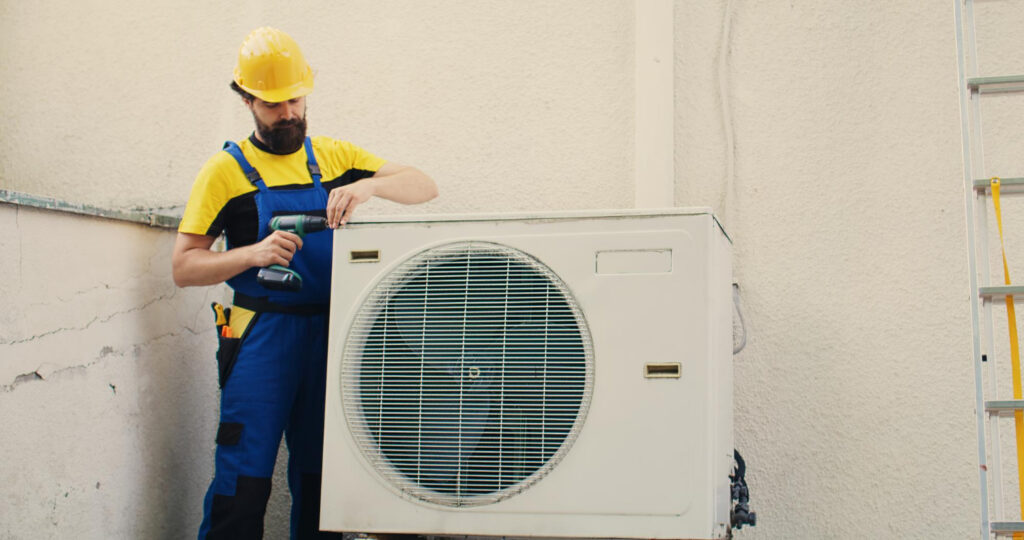Heat pumps work wonders in maintaining the comfort of our homes by providing both heating and cooling solutions. They efficiently transfer heat from one area to another, ensuring a warm environment in winter and a cool atmosphere in summer. However, as with any mechanical system, understanding its various modes is crucial for efficient operation. One such mode is the emergency mode, which can be a mystery to many homeowners.
Emergency mode in a heat pump is a feature designed to help protect the system when something isn’t working correctly. It is essentially a backup or safety mode that signals there’s a problem needing immediate attention. This mode allows the heat pump to bypass certain components, relying on auxiliary heat to keep the home warm. Recognizing when your heat pump switches to emergency mode can prevent further damage and ensure timely repair. Let’s delve into what triggers this mode and what you should do if your heat pump activates it.
What Is Heat Pump Emergency Mode?
Heat pump emergency mode is essentially a safety feature intended to maintain heating even when the primary components are malfunctioning. When the heat pump detects certain faults, it shifts to this mode to prevent further damage to its system while continuing to provide warmth using auxiliary heating, such as electric resistance heaters. This mode helps ensure that your home remains heated, though possibly at a higher operational cost.
Several scenarios may activate the emergency mode in your heat pump system. Understanding these triggers can help prevent unnecessary activation and maintain efficient operation:
– Power Outages or Electrical Issues: Sudden loss of power or fluctuating electrical current can cause a heat pump to shift into emergency mode as a precaution.
– Thermostat Malfunctions: Incorrect temperature readings or communication errors between the thermostat and the heat pump can also trigger this protective mode.
– Refrigerant Leaks or Low Levels: When the system detects low refrigerant, it can’t perform effectively and might switch to emergency mode to avoid overheating.
– Mechanical Failures: Issues like a malfunctioning compressor or fan problems can cause your heat pump to enter emergency mode, signaling that professional repair is needed.
Recognizing these situations not only helps in troubleshooting but also aids in taking preventative measures, reducing the possibility of recurring issues.
Causes for Heat Pump Emergency Mode Activation
Understanding the causes behind emergency mode activation can help homeowners identify issues earlier and minimize disruptions. Here are some typical reasons this mode might be triggered:
1. Power Outages or Electrical Issues: These can occur due to weather-related incidents or faults in the electrical system, prompting the heat pump to enter emergency mode to safeguard its components.
2. Thermostat Malfunctions: A thermostat that misreads temperatures or loses connectivity can cause miscommunication with the heat pump, leading to unexpected shifts to emergency mode.
3. Refrigerant Leaks or Low Levels: Refrigerant is essential for heat transfer, and inadequate levels due to leaks can force the heat pump into emergency mode to prevent system overheating.
4. Mechanical Failures: Faulty parts like a damaged compressor or blocked fans can impact the heat pump’s functionality, triggering emergency mode as a protective measure.
By understanding these causes, homeowners in Roanoke can stay alert to potential problems and seek timely solutions, ensuring their heat pumps maintain peak performance throughout the year.
How to Handle Heat Pump Emergency Mode
When your heat pump in Roanoke enters emergency mode, it’s crucial to approach the situation calmly and methodically. Jumping into quick fixes might lead to more harm than good. Here are some straightforward steps to consider:
1. Check the Thermostat: Verify if the thermostat settings are correct. Ensure it’s set to the desired temperature and the system mode is appropriately configured.
2. Inspect the Circuit Breaker: Look for any tripped circuit breakers. A tripped breaker might cut off power to the heat pump, triggering the emergency mode. Resetting it could resolve the problem, but remember, this should not happen frequently.
3. Visually Inspect the Heat Pump: Look around the outdoor unit for any obvious signs of damage or debris that could obstruct operation. Clear any visible blockages but avoid taking apart the system yourself.
4. Avoid DIY Repairs: Refrain from attempting detailed fixes on your own. Complex components like compressors, refrigerants, and wiring require professional attention to ensure safety and efficiency.
5. Contact Our Technicians: If the basic checks do not resolve the issue, reach out to our professionals for thorough diagnostics and repair. They have the experience and tools needed to restore your heat pump to proper functioning.
Efficiently addressing emergency mode can help minimize disruptions while protecting your system from more significant damage. Quick action ensures your home remains warm and cozy, especially during colder months.
Preventative Measures to Avoid Emergency Mode
Regular maintenance goes a long way in preventing your heat pump from entering emergency mode. Here are some preventative measures to maintain efficient and reliable heat pump performance:
– Schedule Routine Inspections: Regular checks by our technicians can catch potential issues before they become major problems. This proactive approach ensures your system runs smoothly throughout the heating season.
– Replace Air Filters Timely: Dirty filters can reduce airflow and cause the system to overheat, leading to emergency mode activation. Refresh your filters as recommended to maintain optimal performance.
– Keep the Outdoor Unit Clean: Debris, leaves, and dirt can gather around the outdoor unit, blocking airflow and triggering system issues. Regular cleaning keeps your unit functioning as it should.
– Invest in Regular Maintenance Routines: Having a consistent maintenance schedule helps identify and rectify minor problems early on. This investment saves you time and money in the long run by preventing costly repairs.
These preventative steps help create a stable and efficient environment for your heat pump, minimizing the chances of unexpected shifts to emergency mode.
Ensure Reliable Heat Pump Performance in Roanoke
Keeping your heat pump in top shape requires regular attention and professional service. This care not only reduces the likelihood of encountering emergency mode but also extends the life of your system, providing peace of mind throughout the year. Regular maintenance ensures your heat pump remains efficient, keeping your Roanoke home comfortable no matter the season.
Taking these steps seriously means your heat pump will perform reliably, avoiding unexpected repairs or extended downtimes. With preventative care and expert guidance, your heat pump will consistently meet your home’s heating and cooling needs, enhancing your comfort and energy efficiency.
If you are experiencing issues with your heat pump and need reliable service, learn more about heat pump repair in Roanoke to see how professional maintenance can help prevent further disruptions in your home. At Woods Family Heating and Air, our professionals work to keep your system running smoothly throughout the season, reducing unexpected downtimes and costly repairs. For a quick estimate or to book a service visit, please contact us today.






